#coreldraw tutorial logo design
Explore tagged Tumblr posts
Text

How to Create a Logo Design in CorelDRAW: Step-by-Step Guide
Creating a standout logo is more than just combining shapes and text, it’s about capturing the identity of a brand in a memorable and scalable design. If you're looking to create professional, vector-based logos, then CorelDRAW is a top-tier choice. This guide walks you through everything from concept to completion in your logo design journey.
Why Use CorelDRAW for Logo Design?
CorelDRAW is a vector graphics editor known for its precision, scalability, and versatility. One of the core strengths of logo design in CorelDRAW is the control it gives you over shapes, colors, and typography. Since it's a vector-based tool, designs can be scaled from a business card to a billboard without losing quality.
Whether you're a beginner or experienced designer, CorelDRAW's tools like the Shape Tool, Bezier Tool, and the Interactive Fill Tool make designing logos more intuitive.
Step-by-Step Process
1. Set Up the Document
Start by creating a new document:
Choose print or web preset
Set DPI to 300 for high resolution
Choose CMYK for print or RGB for digital projects
2. Plan Your Concept
Before designing, brainstorm your brand values and sketch rough ideas:
What does the logo need to express?
Is it abstract, typographic, or a combination?
3. Build with Basic Shapes
Use tools like the Rectangle and Ellipse Tool to form the foundation. Combine shapes using Weld, Trim, and Intersect for creative customization.
4. Add Text and Style It
Use the Text Tool to insert your brand’s name
Select fonts that reflect the personality of the brand
Convert text to curves (Ctrl+Q) to manipulate it as a shape
5. Pick a Color Scheme
Stick with 2–3 brand colors for versatility
Use the Interactive Fill Tool for gradients
Test the design in black and white for clarity
6. Align and Arrange
Use Align and Distribute for precise placement
Snap to grid or use guidelines for structure
7. Apply Effects (Optional)
Keep effects like drop shadows or outlines minimal to maintain readability.
8. Save and Export
Save in .CDR format
Export in PNG (web), EPS/PDF (print), SVG (scalable use)
Pro Tips
Always prioritize simplicity
Check how your logo appears at different sizes
Avoid stock elements for originality
Common Mistakes
Using raster graphics that don’t scale
Overloading with details
Choosing trendy fonts over timeless ones
Conclusion
Designing a logo involves creativity and strategy. With its powerful vector tools and user-friendly interface, CorelDRAW remains a preferred choice among professionals for logo design in CorelDRAW. Follow these steps to create something unique and scalable. Now, go ahead and start crafting a visual identity that truly represents your brand!
#CorelDRAW#Logo design#Logo design tutorial#How to design a logo#CorelDRAW tutorial#CorelDRAW graphic design
0 notes
Text
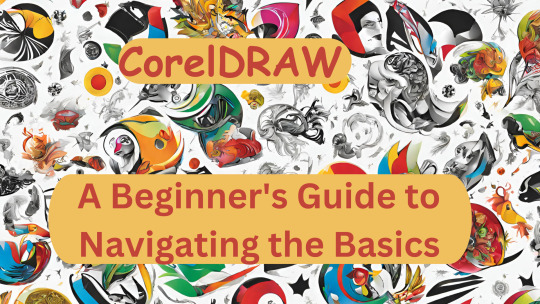
Mastering CorelDRAW: A Beginner's Guide to Navigating the Basics
Are you a newcomer to the world of graphic design, tentatively dipping your toes into the vast expanse of CorelDRAW? If so, fear not, for you've stumbled upon just the right guide to set you on the path to proficiency. In this article, we'll embark on a journey through the fundamental features of CorelDRAW, ensuring that you not only understand the layout of the software but also gain insight into its essential functions.
Before we delve into the nitty-gritty, make sure to hit that subscribe button to stay updated with all the latest tutorials and tips. Now, let's dive straight into business.
Welcome to CorelDRAW! As you launch the software, the first thing that greets you is the user interface. Familiarizing yourself with this interface is key to navigating CorelDRAW efficiently. Let's break it down:
Menu Bar: This is your control center, housing various dropdown menus such as File, Edit, View, Layout, Object, Effect, Bitmap, Text, Table, Tools, Window, and Help.
Standard Bar: Next in line, the Standard Bar provides quick access to commonly used tools and functions.
Property Bar: Situated conveniently below the Standard Bar, the Property Bar displays contextual options and settings based on the selected tool or object.
Tools Bar: Located to the left of the workspace, the Tools Bar is where you'll find an array of tools for creating and editing your designs.
Status Bar: Lastly, at the bottom of the interface, the Status Bar offers valuable information and updates on your current workspace and tasks.
Now, let's shift our focus to the right side of the interface:
Color Palettes: Here lies a spectrum of colors, ready to breathe life into your creations.
Workspace: The blank canvas before you is your workspace, where imagination meets reality.
Now that we've acquainted ourselves with the layout, let's explore some essential functions:
File Menu: Starting with the basics, the File menu offers options such as New (Ctrl + N) for creating a new document. Customize your document settings, including page size, orientation, and color mode, to suit your project requirements.
Page Sizing and Resolution: Select from a range of standard page sizes or customize your dimensions. Ensure optimal resolution for high-quality output, typically set at 300 DPI (dots per inch).
Color Modes: Choose between CMYK and RGB color modes depending on your intended output, whether for print or digital media.
Orientation: Decide between landscape and portrait orientations to best showcase your designs.
Resolution: Maintain a high resolution (300 DPI) for crisp and clear images, especially for print projects.
By mastering these fundamental functions, you're well on your way to unleashing your creativity within the realm of CorelDRAW. Remember, practice makes perfect, so don't hesitate to experiment and explore the myriad possibilities that this powerful software offers.
Stay tuned for more tutorials and advanced tips to elevate your CorelDRAW skills to new heights. Until next time, happy designing!
🌸 Attention all creatives and designers! 🌸
Are you ready to take your designs to the next level? I've got something special just for you: a collection of over 1000+ beautifully crafted floral elements in CorelDRAW format, absolutely FREE! 🎨💐
Imagine the endless possibilities: use them to enhance your logos, create stunning graphics, or add a touch of elegance to your projects. These florals are versatile, customizable, and ready to elevate your designs to new heights.
But here's the catch: to get your hands on this exclusive collection, all you need to do is subscribe to my channel, give this post a like, and share it with your fellow designers. It's that simple!
Don't miss out on this incredible opportunity to supercharge your creativity. Subscribe, like, and share now to unlock your access to over 100 florals in CorelDRAW format. Let's blossom together! 🌼✨ #DesignInspiration #FreebieAlert #CreativeCommunity
Get over 1000+ beautifully crafted floral elements in CorelDRAW format, absolutely FREE!
2 notes
·
View notes
Text
finance and loan Visiting Card and Logo Free CDR File

0 notes
Text
Professional Logo Design Services | Custom & Affordable Branding

A logo design business can be a lucrative and creatively fulfilling venture, especially in today’s branding-focused market. Whether you're a freelance designer or planning to launch a full-scale agency, understanding the industry, mastering design skills, and implementing smart business strategies are key to success.
In this guide, we’ll cover: ✔️ Why logo design is in high demand ✔️ Essential skills for logo designers ✔️ Steps to start your logo design business ✔️ Pricing strategies to maximize profits ✔️ Marketing tips to attract clients ✔️ Tools & resources for professional designers
Why Start a Logo Design Business?
Logos are the visual cornerstone of any brand. Businesses, startups, and entrepreneurs constantly seek unique, memorable logos to establish their identity. Here’s why logo design is a great business opportunity:
✅ High Demand – Every new business needs a logo, and existing brands often rebrand. ✅ Low Startup Costs – You only need design skills and software (like Adobe Illustrator or Canva). ✅ Flexible Work – Work remotely, freelance, or run an agency. ✅ Scalable Income – Charge per project, sell logo templates, or offer branding packages.
Essential Skills for a Logo Designer
Before launching your logo design business, ensure you have:
🔹 Strong Design Fundamentals – Typography, color theory, and composition. 🔹 Proficiency in Design Software – Adobe Illustrator (industry standard), CorelDRAW, or Affinity Designer. 🔹 Creativity & Originality – Avoid clichés; create unique, timeless logos. 🔹 Understanding of Branding – A logo must reflect a company’s values and audience. 🔹 Client Communication Skills – Present ideas clearly and handle feedback professionally.
How to Start a Logo Design Business (Step-by-Step)
1. Define Your Niche
Specializing helps you stand out. Consider:
Startup logos
Luxury brand logos
Minimalist or vintage styles
Industry-specific designs (e.g., tech, food, fitness)
2. Build a Strong Portfolio
Showcase your best work on:
Behance / Dribbble (for designers)
Personal website (using WordPress, Wix, or Squarespace)
Social media (Instagram, LinkedIn)
3. Set Your Pricing Strategy
Common pricing models:
Flat-rate per logo (
100–
100–2,000+, depending on experience)
Package deals (Logo + business card + social media kit)
Subscription model (Monthly branding services)
4. Find Clients
Ways to attract customers:
Freelance Platforms (Upwork, Fiverr, 99designs)
Cold Outreach (Emailing small businesses)
Social Media Marketing (Showcase designs on Instagram/Pinterest)
Referrals & Networking (Ask satisfied clients for testimonials)
5. Deliver High-Quality Work & Build Long-Term Relationships
Provide multiple logo concepts
Offer revisions based on feedback
Upsell additional branding services (business cards, social media kits)
Top Tools for Logo Designers
Adobe Illustrator (Best for vector designs)
Canva (Beginner-friendly)
Looka (AI-based logo maker)
Krita (Free alternative for illustrators)
Marketing Your Logo Design Business
To get consistent clients: ✔️ SEO-Optimized Website (Blog about logo design tips to attract traffic) ✔️ Social Media Presence (Post before/after designs, client testimonials) ✔️ YouTube Tutorials (Show your design process to build authority) ✔️ Paid Ads (Facebook/Google Ads targeting small business owners)
Final Thoughts
Starting a logo design business requires creativity, technical skills, and smart marketing. By specializing, building a strong portfolio, and leveraging online platforms, you can turn your passion for design into a profitable venture.
Ready to launch your logo design business? Start today and help brands make a lasting impression!
0 notes
Text
How to Become a Professional Graphic Designer: A Step-by-Step Guide
In today’s digital-first world, graphic designers are essential in shaping the way we see brands, services, and content. From logos and marketing materials to website interfaces and social media graphics, the demand for skilled graphic designers continues to rise. But how does one actually become a professional graphic designer?
If you're creative, detail-oriented, and passionate about visual storytelling, this guide will walk you through the step-by-step journey to success. And if you're looking to get started with formal training, enrolling in a Graphic Designing Course in Dehradun could be your perfect first step.
🎯 Step 1: Understand What Graphic Design Is All About
Before diving into design software and projects, it's important to understand what graphic design really means. At its core, graphic design is about communicating ideas visually—using color, typography, layout, and imagery to tell a story or deliver a message.
Whether it’s a business card or a full-scale website, every design is created with purpose.
📘 Step 2: Learn the Basics of Design Principles
To become a professional, you must understand and apply fundamental design principles, including:
Balance
Contrast
Alignment
Repetition
Hierarchy
White Space
These are the building blocks of every successful design.
✅ Tip: Most structured training programs, such as a Graphic Designing Course in Dehradun, cover these essentials in the very first module.
🖥️ Step 3: Get Hands-On with Design Software
Mastering popular design tools is non-negotiable. Here are the key ones:
Adobe Photoshop – Photo editing and graphics
Adobe Illustrator – Vector design (logos, icons)
Adobe InDesign – Publishing and layout design
CorelDRAW – Vector graphic design
Figma or Adobe XD – UI/UX and web design
A reputed Graphic Designing Course in Dehradun will give you in-depth, practical training in these tools.
🧠 Step 4: Study Design Trends and Industry Standards
To stay competitive in 2025 and beyond, keep up with trends like:
Minimalist design
Motion graphics
3D and AR design
Dark mode and glowing visuals
Retro and vintage aesthetics
Follow top designers, watch YouTube tutorials, explore Behance, and read design blogs regularly.
📝 Step 5: Enroll in a Professional Graphic Designing Course in Dehradun
If you're serious about making graphic design your career, formal training is essential. A professional Graphic Designing Course in Dehradun helps you:
Learn from industry experts
Practice real-world projects
Build a strong design portfolio
Get certified for better job opportunities
Develop both technical and creative skills
🏫 Top Institutes Offering Graphic Designing Courses in Dehradun:
DSOM (Dehradun School of Online Marketing)
Arena Animation, Dehradun
MAAC Dehradun
G-TEC Education
SEED Institute
These institutes offer beginner to advanced-level training, mentorship, and placement support to help you grow as a designer.
🎒 Step 6: Build a Powerful Portfolio
Your portfolio is your visual resume. It should showcase your best work, versatility, and creativity. Include:
Logo designs
Branding mockups
Social media creatives
Brochure or flyer samples
UI/UX prototypes (if applicable)
✅ Bonus: Most Graphic Designing Courses in Dehradun include portfolio-building sessions as part of the curriculum.
💼 Step 7: Gain Real-World Experience
Once you’ve acquired the basic skills and built a portfolio, it’s time to get hands-on experience. You can:
Work on freelance projects
Intern with design agencies
Volunteer for non-profits or startups
Take part in design contests or challenges
This phase will help you understand client requirements, time management, and working under deadlines—crucial skills for any professional.
📈 Step 8: Network and Stay Connected
Networking is a key part of professional growth. Attend design meetups, webinars, and local creative events in Dehradun. Join online communities on LinkedIn, Discord, or Reddit to stay updated and learn from others.
Also, platforms like AddressGuru help you discover top design institutes and local creative opportunities in Dehradun.
💰 Step 9: Start Earning as a Designer
Once confident in your skills, you can explore different career paths:
In-House Graphic Designer for companies
Creative Agency Designer
Freelancer on platforms like Fiverr, Upwork, and Freelancer
Brand Identity Specialist
Social Media Designer
UI/UX Designer
Many who complete a Graphic Designing Course in Dehradun find job opportunities right after training, especially with a solid portfolio and certification.
🧭 Step 10: Never Stop Learning
Graphic design is constantly evolving. Stay updated by:
Enrolling in advanced or niche courses
Learning motion graphics, 3D design, or animation
Watching tutorials and masterclasses
Getting inspired by design communities like Dribbble, Behance, and Pinterest
The more you learn, the more valuable you become in the design world.
🚀 Final Thoughts
Becoming a professional graphic designer doesn’t happen overnight, but with passion, dedication, and the right training, it’s absolutely achievable. Starting with a Graphic Designing Course in Dehradun gives you a solid foundation, mentorship, and practical skills that set you apart in this competitive industry.
So if you're ready to turn your creativity into a career, take that first step today. Explore top-rated graphic design courses in Dehradun through trusted platforms like AddressGuru, and start designing your future—literally.

#AddressGuru#DesignTrends2025#UIUXDesign#AdobeTraining#GraphicDesignIndia#DesignYourFuture#GraphicDesignInstituteDehradun#adobe illustrator
0 notes
Text
The Best Graphic Design Software of 2023
Graphic Design Software For Designers In 2023: Q & A Tutorial
1. What are the top graphic design software options for designers in 2023?
Top graphic design software options in 2023 include Adobe Creative Cloud (Photoshop, Illustrator, InDesign), CorelDRAW, Canva. Each offers unique features for different design needs, from photo editing to vector graphics and layouts. For web and UI design, tools like Adobe XD is also popular among designers.
2. How has graphic design software evolved in 2023?
In 2023, graphic design software has evolved with enhanced AI integration, offering features like automated design suggestions and advanced image editing tools. Cloud-based collaboration has improved, allowing real-time teamwork. User interfaces have become more intuitive, and tools for 3D design and animation have expanded. Additionally, accessibility features have increased, catering to a broader range of users and skill levels.
3. What features should designers look for in graphic design software in 2023?
In 2023, graphic designers should look for software with user-friendly interfaces, robust collaboration tools, cloud integration, advanced editing capabilities, and support for various file formats. Features like AI-driven design suggestions, customizable templates, and cross-platform compatibility are essential, along with strong customer support and frequent updates to stay current with design trends.
4. What is the difference between vector and raster graphic design software in 2023?
Vector graphic design software uses mathematical equations to create images, allowing for infinite scalability without loss of quality. Common examples include Adobe Illustrator. Raster graphic design software, like Adobe Photoshop, works with pixel-based images, which can lose quality when resized. In 2023, both types are essential for different applications, with vectors favoured for logos, illustrations and rasters for detailed images.
5. Are there any new graphic design software launches for 2023?
Yes, several new graphic design software and updates were launched in 2023. Notable mentions include Adobe's updates to Creative Cloud applications, the release of new features. Additionally tools and received significant enhancements. Always check official websites for the latest information on features and releases.
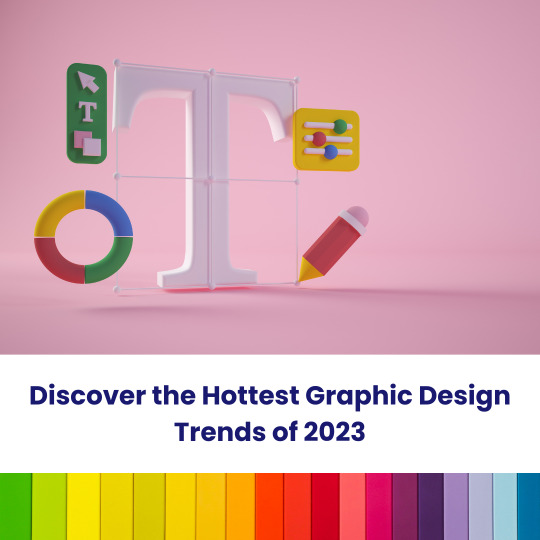
Visit: VS Website See: VS Portfolio
0 notes
Text
Graphic design
Introduction
Graphic design is a fundamental aspect of visual communication, allowing businesses and individuals to express ideas effectively through compelling visuals. From branding and advertising to web design and social media, graphic design helps create a memorable identity and captivate audiences.
Why Graphic Design is Essential?
Enhances Visual Communication – Transforms complex ideas into engaging visuals.
Builds a Strong Brand Identity – Logos, colors, and fonts define a brand’s personality.
Improves User Experience – Well-structured designs make content more accessible and readable.
Increases Engagement – Visually appealing content attracts more attention and interaction.
Creates a Lasting Impression – Professional designs make businesses and individuals stand out in a crowded market.
Best Tools for Graphic Design
Adobe Photoshop – Ideal for photo editing, digital artwork, and creative design.
Canva – A beginner-friendly tool for creating social media graphics and presentations.
Figma – Perfect for UI/UX design and team collaboration.
Adobe Illustrator – Best for vector graphics, branding elements, and professional design.
CorelDRAW – Excellent for print media and layout design projects.
How to Get Started with Graphic Design?
Understand the Basics – Learn about color theory, typography, composition, and layout design.
Choose the Right Design Software – Select a tool that aligns with your skills and project needs.
Explore Online Tutorials – Platforms like YouTube, Udemy, and Coursera provide valuable learning resources.
Practice with Real Projects – Work on creative projects to refine your design skills.
Build an Online Portfolio – Showcase your work on platforms like Behance and Dribbble to attract potential clients or employers.
Promoting Your Graphic Design Work
Sharing your designs on platforms like Behance, Dribbble, Instagram, and Pinterest can help you gain exposure, attract clients, and connect with other designers. Engaging with design communities and participating in creative challenges can also boost your presence in the industry.
Conclusion
Graphic design is a powerful tool that enhances communication, branding, and user experience. Whether you're a beginner or an experienced designer, continuous learning and practice are key to success. Showcasing your work and networking with professionals can open new opportunities in the field.
For more insights and resources, visit:
https://excellenceacademy.co.in/graphic-designing-course-in-chandigarh/
0 notes
Text
What software is best for creating professional logos?
Professional logo creation requires precision, creativity, and a blend of technical tools. Whether you’re brainstorming logo design ideas or implementing intricate motion graphics for animated logos, using the right software can make all the difference. Here’s a detailed guide to the best tools for creating professional logos, widely used by graphic design services to produce exceptional results.
1. Adobe Illustrator
Adobe Illustrator is the industry standard for professional logo design and widely favored by graphic designers. Its vector-based approach allows logos to be resized without losing quality, ensuring they look sharp on everything from business cards to billboards.
Features:
Advanced shape and typography tools for unique and scalable designs.
Wide range of color options, gradients, and effects.
Seamless integration with other Adobe products like Photoshop and After Effects.
Best For: Designers working on detailed or intricate creative logo design ideas that require precision.
2. CorelDRAW
CorelDRAW is another powerful vector-based design software known for its user-friendly interface and flexibility. It’s a popular choice among beginners and professionals alike.
Features:
Extensive customization options for colors, fonts, and effects.
Intuitive tools for creating clean and professional logos.
Easy-to-use interface for quick logo creation.
Best For: Small businesses or freelance designers looking to produce high-quality logos efficiently.
3. Canva
Canva is an excellent option for those seeking simplicity. While not as advanced as Illustrator or CorelDRAW, Canva’s drag-and-drop interface and pre-made templates make it accessible to beginners and non-designers.
Features:
A large library of templates and icons to inspire logo design ideas.
Simple tools for adding text, shapes, and colors.
Collaborative features for teams.
Best For: Quick mockups, brainstorming creative logo design ideas, or for users with minimal design experience.
4. Adobe After Effects
If your branding strategy requires animated logos with motion graphics, Adobe After Effects is unmatched. This software is widely used by professionals to create engaging logo animations for video intros, advertisements, and social media.
Features:
Tools for creating dynamic animations and 3D effects.
Integration with Adobe Illustrator for seamless logo imports.
Support for motion tracking and visual effects.
Best For: Brands or designers focusing on animated or video-based logo design.
5. Affinity Designer
Affinity Designer is a cost-effective alternative to Adobe Illustrator and offers both vector and raster graphic capabilities. It’s ideal for creating detailed logos with advanced visual elements.
Features:
Smooth user interface for beginners and pros.
Support for creating both pixel and vector graphics.
Compatibility with other Affinity products for a seamless workflow.
Best For: Designers looking for professional results on a budget.
6. Inkscape
Inkscape is a free, open-source alternative for vector graphic design. It’s packed with features for creating professional logos, making it a great choice for beginners or businesses on a tight budget.
Features:
Advanced path and node editing tools for precise logo creation.
Support for exporting designs in multiple formats.
Extensive community support and tutorials.
Best For: Beginners seeking a no-cost option for professional-looking logos.
7. Gravit Designer
Gravit Designer is a web-based design tool with a focus on simplicity and usability. It supports vector-based designs and offers features to create sharp and scalable logos.
Features:
Cloud-based storage for easy access and collaboration.
Flexible tools for shapes, paths, and layers.
Compatibility with multiple devices and platforms.
Best For: Remote teams or individuals who prefer web-based solutions.
How Professional Graphic Design Services Use These Tools
Professional graphic design services leverage a combination of these tools to deliver high-quality, versatile logos that meet clients’ needs. For instance, they may use Adobe Illustrator for intricate designs, Adobe After Effects for motion graphics, and Canva for brainstorming or mockups. This multi-software approach ensures flexibility and precision at every stage of the design process.
Choosing the Right Software for Your Needs
For Beginners: Canva and Inkscape are user-friendly and offer templates to kickstart your creativity.
For Professionals: Adobe Illustrator, CorelDRAW, and Affinity Designer provide advanced tools for detailed and scalable designs.
For Motion Graphics: Adobe After Effects is the top choice for creating animated logos.
For Budget-Conscious Users: Inkscape and Affinity Designer offer professional results without high costs.
Innovating Creative Logo Design Ideas
By combining powerful software with creative thinking, designers can craft logos that are visually stunning and aligned with a brand’s identity. Whether it’s brainstorming fresh logo design ideas or incorporating cutting-edge motion graphics, the right software ensures professional outcomes.
Conclusion
The best software for creating professional logos depends on your expertise, project requirements, and budget. Tools like Adobe Illustrator, CorelDRAW, and Canva each offer unique features that cater to diverse needs. Professional graphic design services seamlessly blend these tools to deliver logos that stand out, providing a lasting impact for businesses and brands.
#Graphic Design Services#Logo design Ideas#creative design#branding services#motion graphics#logo design#scribe&sigil
0 notes
Text
How to Use Graphic Design Software: A Basic Guide

Graphic design is a fantastic field with plenty of creative opportunities. Whether you're aiming for a career in graphic designing or just want to improve your skills, learning how to use graphic design software is essential. This guide will help you get started with some basic tools and tips, perfect for beginners and students.
Why Learn Graphic Design Software?
Graphic design software allows you to create stunning visuals, from simple logos to complex illustrations. Mastering these tools can open doors to various job opportunities, especially if you're looking for graphic designing classes in Yamuna Vihar. Knowing how to use these programs is a must for anyone serious about a career in graphic design.
Popular Graphic Design Software
Adobe Photoshop: Great for photo editing and manipulation.
Adobe Illustrator: Ideal for creating vector graphics like logos and illustrations.
CorelDRAW: Another powerful tool for vector-based design.
Canva: A user-friendly online tool perfect for beginners.
Getting Started with Graphic Design Software
Step 1: Choose the Right Software
If you're new to graphic design, start with software that matches your current skill level. For example, Canva is a great choice for beginners because of its easy-to-use interface. As you become more comfortable, you can move on to more advanced software like Adobe Photoshop or Illustrator.
Step 2: Learn the Basics
Most graphic design software comes with tutorials and guides to help you get started. Spend some time exploring these resources. Understand the basic functions like creating new documents, using layers, and saving your work.
Step 3: Practice, Practice, Practice
The key to mastering graphic design software is practice. Start with simple projects like designing a flyer or a social media post. As you gain confidence, challenge yourself with more complex designs.
Tips and Tricks for Beginners
Use Keyboard Shortcuts: Learning shortcuts can save you a lot of time. For example, in Photoshop, pressing "Ctrl + Z" undoes your last action.
Keep it Simple: When starting, try not to overwhelm yourself with too many features. Focus on mastering the basics first.
Stay Organized: Use folders and layers to keep your work organized. This makes it easier to edit and make changes later.
Seek Feedback: Don’t hesitate to ask for feedback from teachers or peers. Constructive criticism can help you improve your skills faster.
Graphic Designing Centers in Uttam Nagar: These classes can provide you with hands-on experience and expert guidance.
Finding Graphic Design Training
If you're serious about a career in graphic designing, consider enrolling in a class or training program. There are many options available, including:
Graphic Designing Training Institutes in Uttam Nagar: These institutes often offer comprehensive courses that cover various aspects of graphic design.
Graphic Designing Classes in Yamuna Vihar: Another excellent option for students looking to enhance their skills.
Graphic Designing Training Institutes in Yamuna Vihar: These centers can offer specialized training and workshops to help you stay updated with the latest trends and techniques.
Conclusion
Learning how to use graphic design software is the first step toward a successful career in graphic design. By choosing the right tools, practicing regularly, and seeking proper training, you can build a strong foundation in this creative field. Whether you're looking for graphic designing training institutes in Uttam Nagar, there are plenty of resources available to help you on your journey. Happy designing!
0 notes
Video
youtube
Logo In Coreldraw Guide In Urdu / Hindi Class -11 #coreldraw #logo #log...
Logo In Coreldraw Guide In Urdu / Hindi Class -11 #coreldraw #logo #logocoreldraw In this tutorial, we will explore the process of designing a logo using CorelDRAW. This step-by-step guide is specifically tailored for Class 11 students and will be presented in Urdu/Hindi. Key Topics Covered: 1) Introduction to CorelDRAW Interface: Overview of essential tools and panels Understanding the workspace and layout 2) Basic Shapes and Text: Creating and manipulating basic shapes (circles, squares, etc.) Adding and formatting text for logos 3) Using the Pen Tool: Drawing custom shapes and lines Creating smooth curves and precise lines 4) Combining Shapes: Merging, welding, and trimming shapes to form complex designs Using the Shape tool to refine edges 5) Color and Fill Techniques: Applying solid colors, gradients, and patterns Using the Eyedropper tool for color matching 6) Effects and Transformations: Adding shadows, glows, and other effects Rotating, scaling, and skewing objects 7) Exporting Your Logo: Preparing the logo for various formats (JPEG, PNG, etc.) Understanding resolution and quality settings By the end of this tutorial, students will have the skills to create professional-looking logos, combining creativity with CorelDRAW's powerful tools. Please subscribe for updates on upcoming videos. pen tool in adobe illustrator : https://youtu.be/sJcUT0UuuaY?si=Ej7JDoD4jeMsEgZH Pen Tool in Adobe Photoshop : https://youtu.be/Z0tD6Wa1iGI?si=pF4hrTy8_LVhWfTR watch for How to use Text tool in coreldraw #coreldrawinhindi https://youtu.be/XK8fvK1bnso A Step-by-Step Guide to Using Perspective Wrap in Photoshop #photoshop https://youtu.be/0ko_C_IciVI A Step-by-Step Guide to Creating Professional Profile Picture For Fiverr in Adobe Photoshop #hindi https://youtu.be/c1wE5NCUeF8 HTML (For Beginner) https://youtube.com/playlist?list=PLpuSKeQTK63V9UvuXSr45UECL-0kl2HzA&si=wkUJnN2nj2kNrfnb CorelDRAW Pathfinder Tool Explained Combine, Trim, and More | #coreldrawtutorialinhindi https://youtu.be/5nMc4Ln1Nbg logo design in coreldraw,coreldraw logo design,coreldraw,logo design,logo in coreldraw,coreldraw tutorial,logo,logo design coreldraw,corel draw logo,coreldraw logo design tutorial,how to make logo in coreldraw x7,creative logo design in coreldraw,coreldraw tutorial in hindi,in coreldraw,logo design tutorial
0 notes
Text
Coreldraw Course in Rajkot - Best Coreldraw Training in Rajkot with Affordable Fees
Coreldraw Course in Rajkot - Best Coreldraw Training in Rajkot with Affordable Fees
Are you looking to improve your graphic design skills and unleash your creative potential? Then you are at the correct place to learn CorelDraw Course in Rajkot with affordable fees. CorelDraw classes provide inexpensive and high-quality graphic design training in Rajkot for students, beginners, and learners. We offer good quality education to students and provide a lot of opportunities for careers with the best job placement.
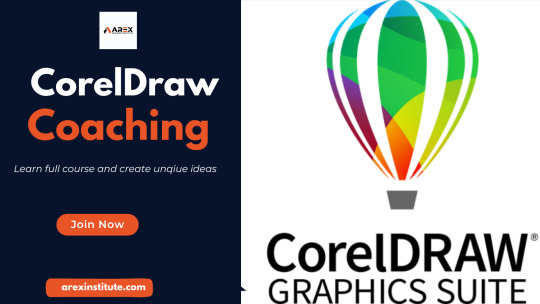
Coreldraw Course in Rajkotis very demanding and useful, you can create a unique and designer poster after learning graphic designing. Our institute provides the best coaching for the Coraldraw course. we offer highly qualified coaches, also easy to learn about the CorelDraw course and develop your skills. The Coreldraw is easy to learn and the benefit of CorelDraw Classes is they help you explore your idea without any limitations.
The Arex Institute Coreldraw Classes in Rajkotis the best classes for learning full CorelDRAW tutorials, our institute offers certificates as well as the best job placement. You can use CorelDRAW software to create QR codes with special effects for a specific theme. They will teach you how to contrast adjustments, color balancing, special effects like borders to images, and support for multiple layers.
Our institute provides the best Coreldraw Training in Rajkot, we teach step by step CorelDRAW courses from basic design and also provide advanced level knowledge skills. Top CorelDraw training center helps to learn and we teaching you illustrate, photo edit, and modify objects. Every little thing can be edited separately, meaning that the shape, color, size, and position can be changed with high quality.
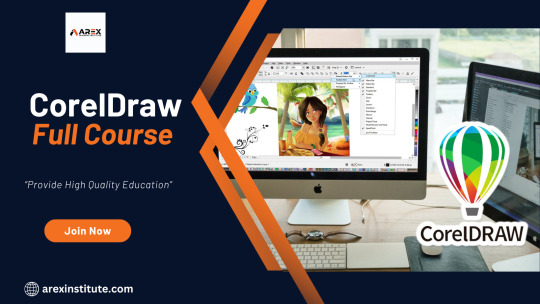
Nowadays Coreldraw is very useful for creating logos, brochures, flyers, business cards, Mock - Up and many more to advanced level contrast adjustments, and color balancing with special effects. Once you complete the course you will develop your skills and knowledge. The CorelDRAW course is completed within 3-4 months and Arex Institute is the best platform to learn Photoshop, CorelDraw, and Illustrator Software and also improve your skills. The CorelDraw latest version is CorelDraw X8 and the CorelDraw 9.0 Graphics Suite is the best version for creative design.
In this course any students can join, as well as without any experience people can also join to learn coreldraw full course. This amazing design software meets day-to-day unique design with new templates. By the end of this course, you will be comfortable using CorelDraw. In our institutes many students are trained like 120+ and 110+ have job placement done with the best experience knowledge. After learning you can use your creativity in your job. We are the best graphic design classes in Rajkot because we offer the latest technology courses and provide practical skills and knowledge. Our expert level coreldraw classes provide modern facilities and teachers are friendly to teach you full coaching of graphic design.

So, stop wasting time to search the best CorelDRAW course in Rajkot, our institute is perfect for learning graphic design courses, and we 100% guarantee to get a certificate and job placement. You can achieve your dreams, by learning expert level graphic design tutorials. Visit our site and join now to learn a full graphic design course with affordable fees.
0 notes
Text
How to Become a Graphic Designer: A Step-by-Step Guide for 2025

Graphic design is more than just making things look good—it’s about solving problems visually and communicating ideas in a clear and compelling way. Whether you’re drawn to creating logos, designing websites, or crafting eye-catching social media graphics, a career in graphic design course can be both creatively fulfilling and financially rewarding.
In today’s digital-first world, businesses rely on skilled designers to help tell their brand stories and connect with audiences. If you’re interested in becoming a graphic designer, this guide will walk you through the key steps you need to take—from education and skill-building to gaining real-world experience and creating a portfolio that stands out.
1. Start With a Solid Educational Foundation
You don’t need a fancy art school degree to become a graphic designer, but having a strong educational base definitely helps. If you’re still in high school, take advantage of art, photography, and computer classes to explore your interests. Many schools now offer digital design electives that can give you a head start.
After high school, consider enrolling in a graphic design degree program. A bachelor’s degree in graphic design or a related field can provide a structured learning experience, exposure to industry professionals, and access to internships. Accredited schools offer courses in everything from typography to branding and interactive design.
But don’t worry if college isn’t the right fit for you. Today, many successful designers are self-taught or have learned through online programs. Platforms like Coursera, Skillshare, and LinkedIn Learning offer affordable courses taught by experienced designers. These resources are great for building your skills at your own pace, especially if you’re balancing work or other commitments.
2. Learn the Tools of the Trade
To succeed in graphic design, you need to be comfortable using industry-standard software. Adobe Creative Cloud is the most widely used suite, especially tools like Photoshop, Illustrator, and InDesign. These programs allow you to create everything from digital illustrations to print-ready brochures.
Other tools, like Canva and Figma, are becoming increasingly popular, especially for web and social media design. Sketch and CorelDRAW are also useful depending on the type of work you want to do. The key is to master a few tools really well, rather than trying to learn everything at once.
Most online courses come with tutorials and hands-on projects that help you practice using these tools. Don’t just watch—create. The more you design, the more confident and efficient you’ll become.
3. Build Your Design Skills
Design is both an art and a science. In addition to learning software, you’ll need to understand the core principles of visual communication. This includes typography, color theory, layout design, composition, and branding.
A strong graphic designer knows how to make elements work together to tell a story or evoke a feeling. Start small by recreating ads or website banners you like—this will help you understand why certain designs work. Then begin creating your own designs from scratch based on creative briefs or prompts.
Design challenges, such as the “Daily UI” or “36 Days of Type,” are great ways to practice consistently. They also give you content to add to your portfolio (more on that in a minute).
Once you’ve got a few designs under your belt, consider improving further by:
Studying popular designs and asking, “Why does this work?”
Reading books like The Elements of Graphic Design by Alex W. White
Watching design critique videos on YouTube
Joining online communities where you can get feedback (like Reddit’s r/design_critiques)
These small steps can lead to big improvements over time.
4. Build a Standout Portfolio
Your portfolio is your most powerful tool when applying for jobs or freelance gigs. It’s what employers and clients will look at to judge your creativity, skill level, and potential.
Start by including your best projects—whether they’re personal, academic, or freelance. Quality matters more than quantity. Be sure to include a mix of styles and formats (like branding, posters, web design, or social media graphics) to show your versatility.
Each project should tell a story: what was the challenge, what was your process, and how did you solve the problem visually? If you don’t have real client work yet, create mock projects for imaginary brands or redesign existing campaigns.
Once your portfolio is ready, showcase it on platforms like:
Behance (great for community exposure)
Dribbble (especially for UI/UX and digital design)
Your own website (highly recommended for personal branding)
5. Get Real-World Experience
Learning design theory is important, but real-world experience is where you truly grow. Try to land an internship or entry-level job with a creative agency, marketing team, or non-profit organization. Even if it’s unpaid at first, the experience you gain can be invaluable.
Freelancing is another great way to get started. Sites like Upwork, Fiverr, and Freelancer can help you find small gigs to build your client communication skills and confidence. Don’t underestimate local opportunities either—offer to design flyers or social media graphics for a local business or community event.
The more projects you complete, the more professional you’ll look—and feel.
6. Stay Up to Date and Keep Learning
Graphic design is always evolving. Trends change, tools update, and client expectations shift. The best designers are lifelong learners who stay curious and open to new ideas.
Follow top design blogs like Creative Bloq, Smashing Magazine, and AIGA Eye on Design. Subscribe to design YouTube channels, listen to podcasts, and attend webinars or virtual conferences. These are great ways to stay inspired and learn from industry leaders.
You can also take advanced courses in areas like animation, UX/UI design, or motion graphics to expand your skillset and open up new career paths.
7. Find Your Niche and Network
As you gain experience, you may find yourself drawn to a specific area of design. Some designers focus on branding and logo creation, while others specialize in UX/UI, web design, packaging, or motion graphics.
Specializing can help you stand out and command higher rates. It also allows you to become an expert in a particular field, which builds credibility with clients and employers.
In parallel, start building your professional network. Join design communities on LinkedIn or Slack, attend local meetups or virtual events, and reach out to other designers for advice. Relationships and word-of-mouth referrals often lead to job opportunities.
Conclusion
Becoming a graphic designer in 2025 is both achievable and rewarding—whether you go the traditional route or forge your own path through online learning and practice. Focus on building a strong foundation, honing your skills, creating a compelling portfolio, and gaining hands-on experience. Stay curious, stay inspired, and never stop learning.
Remember, every great designer started exactly where you are now: with a passion for creativity and a willingness to grow. Your journey is uniquely yours—embrace it, and let your designs speak for themselves.
0 notes
Text
Discover 7 Best Cricut Software to Get Pro-level DIY Projects
The Cricut cutting machine is used widely by DIY enthusiasts. No matter whether you are a fashion designer or a crafter, you can use the Cricut machine and let your design enter the real world. However, using a Cricut cutting machine is not enough; you also need Cricut software where you can create your designs. This software allows you to cut out any kind of shape and font. Using this, you create stunning projects on different devices, like desktop computers, tablets, laptops, and smartphones.
Sometimes, the digital die-cutting unit won’t allow you to cut multiple fonts. As a result, you need to buy a separation, which is far more expensive and redundant to invest in. Hence, I will suggest you use similar tools. For this, you need to read the guide till the end.
In this blog, you will find the most widely used Cricut app alternatives that will provide you with the platform to show your creativity.
1. Cricut Design Space
Design Space is a software platform provided by the Cricut brand itself to create layout art and text, which can be further cut on Cricut machines. This Cricut software is completely free and comes with your Cricut device.
The tool is powerful and easy to use, which lets you complete numerous projects from scratch. Since the software was developed for the Cricut machine, you won’t find some features anywhere else.
Moreover, the software works well with desktop and mobile devices. So, grab your phone and PC and start diving into your design. In addition, it includes a lot of free templates, designs, and fonts for popular items such as cards and invitations.
2. Adobe Photoshop

Photoshop is an excellent tool for creating graphics and editing your photos. Mostly, it is used by graphics designers and professional people, including hobbyists.
Here, you can work on photographs to retouch and manipulate them as per your wish. Not only that, but it is quite good at making all types of vector art, making it a crucial tool in your Cricut list.
Since Photoshop provides a variety of tools, you can create several designs that you can imagine. Even though it is not affordable software, it can do a lot if you use it. Plus, this can be an irreplaceable alternative to Cricut software.
3. Adobe Illustrator
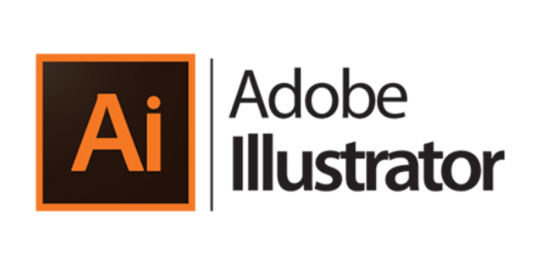
Adobe Illustrator is one of the best Cricut software for professionals and artists who use Cricut. On Illustrator, you can create various shapes, symbols, and texts with captivating font styles.
You will not get stuck in between while working on it, as you will be able to find the solutions through the online tutorials. It’s all because of its popularity among arts enthusiasts.
Go for this software if you are ready to pay to get all the features you need.
4. Canva
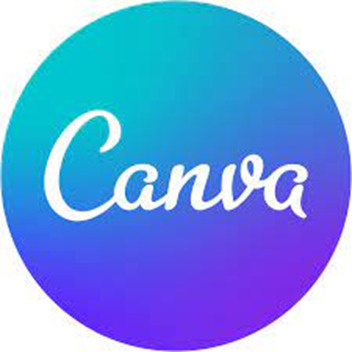
This is the popular free tool that you can use as a Cricut software. The tool has a pleasing interface with all the features to make your design look gorgeous. However, the platform is especially good for lettering and stickers.
Additionally, Canva gives a wide range of options for font styles that you can use for free. For stickers, you can use pre-made templates that are downloadable, making it easy for anyone to design without having prior experience.
If you are okay with a premium subscription, then go for the Canva brand kit, where you can access an extensive library that includes millions of stock photos, videos, audio, and graphics. It offers all the tools to create the premier design that you can think of.
5. CorelDRAW
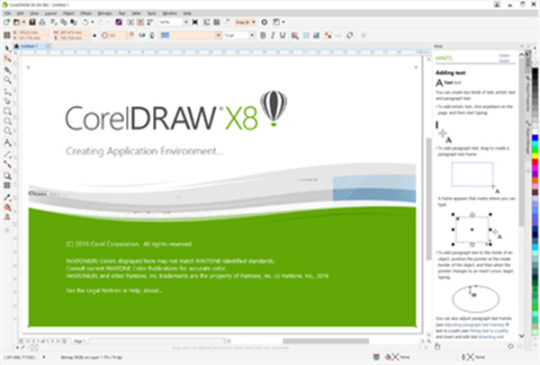
It is a multitasking Cricut software and is ideal for creating vector graphics. By using this app, you can make signs, logos, 3D models, animations, and other internet graphics on your computer.
Many professional photo artists use this platform to work on their new ideas to align with the latest trends.
It also gives you the option to customize your existing designs. Also, you can work on predesigned templates that include floral and geometric types of patterns.
Corel offers a free trial. Hence, you can try its free trial before you make a purchase.
6. Inkscape
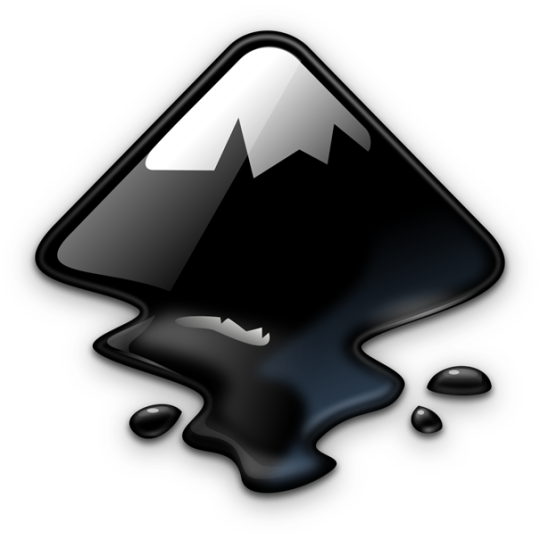
This is completely free Cricut software as it is an open-source vector graphics editor. You can give it a try because it is capable of working with raster and vector images.
If you want vinyl material and paper to be cut, then this software can help you in numerous ways to create your designs by using paths and shapes.
The most advanced feature of Inkscape is its ability to export SVG files, which are known as the universal file type that lets you move between different design programs without any problems. This feature makes it an excellent Cricut software for your Cricut projects.
7. Affinity Designer

The tool is a perfect choice for those who want to work in detail. For example, if you want to edit every pixel of your designs, then you must go for it. It is capable of zooming up to 1,000,000%, which is great for working on each pixel to make your design look better.
The Affinity designer comes with amazing features, such as a powerful color tool to select colors from any photos and many more.
Similarly, you will be amazed by its clean and straightforward interface. It is quite similar to Inkscape or Sketchup. It is my advice that you consider the best Cricut software to use in 2023.
FAQs
Can I use Canva for my Cricut projects?
Yes, Canva is a free tool that provides a range of features to edit your designs, images, and texts. It is also comparable with Cricut. To use this software, you must create your Canva account, and once done, you can start your creativity. Plus, you can use its subscription version to access extensive libraries.
Is it possible to use Cricut Design Space for free?
Yes, definitely! You can download the Design Space account without a subscription. Design space is the only way to run your Cricut machine. Additionally, it doesn’t require Cricut Access to use it. Using this app will allow you to get limited free fonts and images, which you can infuse into your design, too, for free of cost.
Do I need a computer to use Cricut?
No, you can use a Cricut machine without a computer as well. For this, you need a smartphone, and you can do your design to some extent. Using a smartphone has its disadvantages, such as you will not get all the features that you might be getting on your computers. Therefore, it is always good to use a computer if you want to design something better.
#cricut software#cricut new machine setup#cricut.com/setup#cricut setup#cricut explore air 2#cricut#design.cricut.com#design.cricut.com/setup#cricut design space login#design
0 notes
Text
Main Tools Of Coreldraw In Hindi :
Main Tools Of Coreldraw In Hindi :
Main Tools Of CorelDraw In Hindi : Tools Of Coreldraw – इन सारे Tool का Corel Draw में Use एक Graphice Design और Vectors Graphic में होता है। निम्नलिखित illustration. Defualt CorelDRAW Toolbox में एक और fly out दिखाता है, और Tool को अधिक आसानी से ढूंढने में आपकी Help कर सकता है। 1. Pick Tool :- पिक टूल के जरिए आप किसी Object को Select कर सकते हैं, उसकी Position change कर सकते हैं या फिर उस…

View On WordPress
#all tools of coreldraw#all tools of coreldraw 12#all tools of coreldraw 12 in hindi#all tools of coreldraw in hindi#coredraw tools#coreldraw#coreldraw (software)#coreldraw 2021 tutorial#coreldraw all tools in hindi#coreldraw all tools tutorial in hindi#coreldraw graphics suite#coreldraw in hindi#coreldraw tools in hindi#coreldraw tutorial#coreldraw tutorial in hindi#coreldraw tutorial logo design#coreldraw tutorials#coreldraw x5#coreldraw x7#coreldraw x8#how to create a logo in coreldraw#how to use coreldraw#how to use coreldraw tools#tools of coreldraw tutorial in hindi
0 notes
Text
Key Principles of Effective Graphic Design: Typography, Color Theory, and Layout
Image editing in graphic design:Common Questions Answered
1.Which app is mostly used for graphic design?
Adobe Photoshop is the most widely used app for graphic design, known for its powerful editing capabilities and versatility in creating images, graphics, and digital art. Other popular graphic design tools include Adobe Illustrator for vector graphics, Canva for user-friendly templates, and CorelDRAW for illustration. Each app caters to different design needs, but Photoshop remains the industry standard for many professionals.
2. What are graphic tools?
Graphic tools are software applications or platforms used to create, edit, and manipulate visual content. They include design software like Adobe Photoshop and Illustrator, online platforms like Canva, and data visualization tools such as Tableau or Microsoft Power BI. These tools enable users to craft graphics, infographics, illustrations, and other visual representations for various purposes, including marketing, presentations, and social media. Graphic tools often feature user-friendly interfaces and a range of templates and features that cater to both beginners and experienced designers, enhancing creativity and communication through visual means.
3. What techniques do graphic designers use?
Graphic designers employ various techniques, including typography for effective text presentation, color theory to evoke emotions, and composition principles to create visually appealing layouts. They utilize software like Adobe Creative Suite for digital designs, while hand-drawing skills enhance creativity. Designers also apply visual hierarchy to guide viewer focus, and utilize grids for balanced design structures. Incorporating vector graphics ensures scalability, while understanding branding helps maintain consistency. Additionally, techniques like layering, texture application, and contrast usage further enhance their designs, allowing for unique and engaging visual communication.
4. Which type is best in graphic design?
The best type in graphic design often depends on the project's context and audience. However, sans-serif fonts like Helvetica and Arial are commonly favored for their modern, clean look and readability, especially in digital formats. Serif fonts like Times New Roman or Georgia are ideal for print materials that convey tradition and reliability. Ultimately, the choice should align with the brand's identity, the message being communicated, and the overall aesthetic of the design. Experimenting with various typefaces can help find the best fit for specific design needs.
5. How to start graphic design for beginners?
To start graphic design as a beginner, begin by understanding the basic principles of design, such as color theory, typography, and composition. Familiarize yourself with design software like Adobe Photoshop, Illustrator, or free alternatives like Canva and GIMP. Explore online tutorials and courses to build your skills. Practice by creating simple projects, like logos or social media graphics. Analyze designs you admire and seek feedback on your work. Join design communities to connect with others and gain inspiration. Consistent practice and experimentation will help you grow as a designer over time.
Visit: VS Website See: VS Portfolio

Visit: VS Website See: VS Portfolio
0 notes
Text
youtube
Best Logo Design Ideas 5
Please, Watch this my Video.
Like+Comment+Subscribe my YouTube Channel for More Tutorials.
#logo#logo design#logotype#coreldraw x7 tutorial#coreldraw x7#coreldraw tutorial#coreldraw#best#best design#best logo design ideas#best logo design company#best logo design services#graphic design#design
2 notes
·
View notes